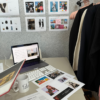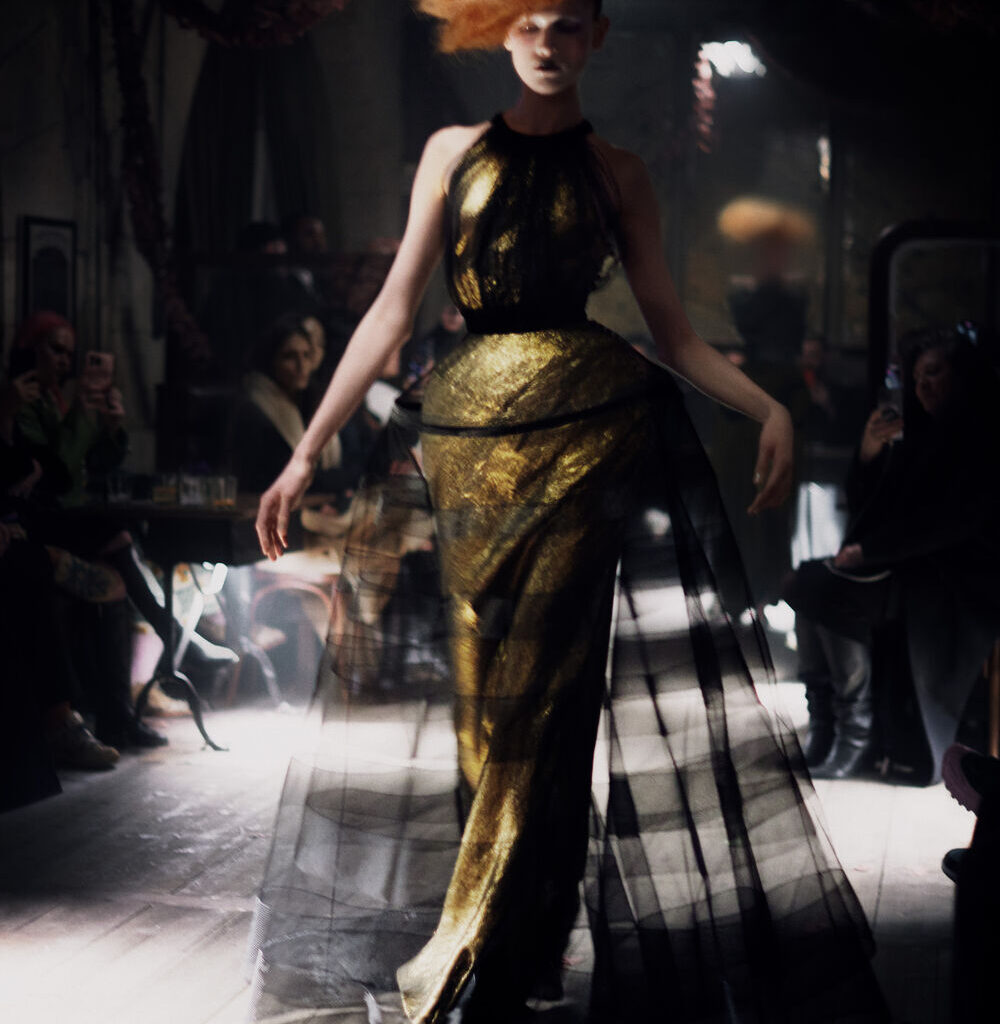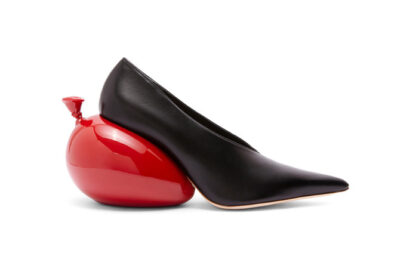What makes a fashion show iconic? Is it the clothes, the location, the set design? Probably all of these. And it’s hard to pick a favorite. With so many runways staged over the years, the amount of brands present on the market, and exquisite locations, there have been many unforgettable moments in Fashion Week history.
As fashion enthusiasts like you, we have our favorite collections in terms of looks. But as an educational platform about the fashion industry, we strive to choose the best shows according to their impact and the shift they made in fashion and culture. Therefore, in this article, we selected 10 fashion shows that according to us are the ‘best’ taking into account:
- The first-ever fashion show
- The most international and collaborative runway
- The first show open to the public
- Style Revolution
- Brand Reinvention
- Runway Impact
- Best Show Abroad
- Designer Tribute + Supermodels
- Innovation
- Theatricality
Curious to know the winners? Let’s go!
10 Most Iconic Fashion Shows
The First-Ever Fashion Show
Although the couture industry was born in Paris in the 1850s with Charles Frederick Worth, regarded as the first fashion designer and the founder of Haute Couture who launched the practice of salon shows, the first fashion show (in the aspect most close to today’s shows) took place in the U.S. In 1903, a shop called Ehrich Brothers organized the US’s first fashion show in New York City, as it is thought.
The difference between the salon shows of Charles Frederick Worth and his contemporaries and the event at the Ehnich Brothers and others who followed is that the latter were more artistic and theatrical, although not as much as nowadays, of course.
The Ehnich Brothers’ show was a big success. As by 1910 department stores and designers all over the United States were holding their own shows. Then, by the 1920s, the fashion show was a well-established and recognized way to promote a collection.
On July 18, 1943, Eleanor Lambert launched the first Press Week in New York. As the arrival of World War II and the Nazi occupation made it impossible for U.S. journalists to travel to Paris, where the couture industry was concentrated until then, Lambert saw a unique opportunity to diverge the attention from Paris and grow the fashion week scene in the U.S., encouraging American designers to showcase their creations in their home country. This event marked the beginning of Fashion Week as we know it today. So even if technically it wasn’t one show, as the world’s first-ever fashion week it deserves to be on the list.
The Battle Of Versailles
GO Award for the most international and collaborative runway: USA meets France
Fast forward to November 28, 1973, Paris hosted its first-ever fashion week with a first show called “The Battle of Versailles”. It was the first time American and French fashion designers met on the same runway. Yves Saint Laurent, Emanuel Ungaro, Pierre Cardin, Hubert de Givenchy, and Marc Bohan for Christian Dior were representing France; Anne Klein, (accompanied by her then 25-year-old assistant Donna Karan) Halston, Oscar de la Renta, Bill Blass, and Stephen Burrows were representing The United States.
The Battle Of Versailles was the first event during which Couture and Ready-to-wear collections were showcased together in Paris. While French fashion designers were oriented toward luxury haute couture, the American fashion market was specializing in prêt-à-porter and sportswear. It is considered a turning point in the fashion industry which put American designs on the international fashion scene, so France was no longer the only epicenter of the fashion industry. You can learn more about this landmark fashion show in this article.
Mugler Fall Winter 1984
GO Award for the first fashion show open to the public
Nowadays, most fashion shows are big events with hundreds of attendees and live streaming through social networks. However, before, fashion shows were pretty intimate events, reserved for a few clients, journalists, and buyers. You could rarely even have cameras at these events because the designers feared their designs would be copied. After the first NYFW, the scale of the shows grew but they remained close to a few industry professionals and were still not open to the public. Until arrived…
Thierry Mugler.
For the 10th anniversary of his eponymous brand, in March 1984, Thierry Mugler staged the first-ever commercial fashion show at the Zénith Stadium in Paris. His Fall/Winter 1984 collection was presented to a crowd of 6,000 people – mostly the press and paying guests. According to Vogue, the show was “designed to extend into the seating area and “embrace” the audience.” The looks were centered around Olympian, space-age, and religious themes. The grand finale featured the descent from the ceiling of iconic supermodel Pat Cleveland – then 6-months pregnant – as the Madonna in a luminescent gown. Mugler’s 10th-anniversary collection was, undoubtedly, one of the most theatrical runways of the 20th century.
Perry Ellis Spring Summer 1993
GO Award for style revolution
After Marc Jacobs established his namesake label in 1984, he also worked from 1988 to 1993 as vice president and president, respectively, of women’s design at Perry Ellis. His Spring 1993 Grunge collection there is one of the most memorable of his career. It was the one that got Marc Jacobs fired from Perry Ellis, but it also defined his career and became one of the decade’s most important turning points for the fashion industry.
Though the grunge style seems totally appropriate today, back in 1992, critics across the industry backlashed the collection and it never went into production. As you remember, the early 1990s were still marked by the glamour and glitz of the 1980s. So the world wasn’t ready. However, Marc Jacobs’ pioneering grunge aesthetic defined a big part of the ‘90s, and his Spring 1993 collection is the one considered to have marked a major transition in fashion from couture to streetwear. It also remains the designer’s favorite. “The Grunge collection epitomized the first time in my professional career I was unwavering in my determination to see my vision come to life on the runway, without creative compromise,” he said in a statement to Vogue.
Gucci Fall Winter 1995
GO Award for brand reinvention
Every time a new creative director joins a brand, it goes through some changes – some more radical than others – that’s no secret. However, Tom Ford’s first show – the Fall/Winter 1995 one – as creative director of Gucci was one of the loudest in history.
Tom Ford first worked as a womenswear designer, but it wasn’t until he took over as Design Director in 1994 that he got really noticed. Although the Fall 1995 show wasn’t Tom Ford’s first one for Gucci, it was the season that marked a new start for the brand. He was given a complete carte blanche, and he did not disappoint. From this show onwards, Ford improved the house’s image, which was tarnished by family feuds, rejuvenated the styles, and revived its fortune. In sum, Ford reclaimed Gucci’s place in the luxury fashion industry.
Alexander McQueen Spring Summer 1999
GO Runway Impact Award.
In September 1998, Alexander McQueen staged one of the most memorable shows in history at Gatliff Road Warehouse, an unused former bus depot in London’s Victoria neighborhood. It was his 13th show since launching his eponymous label in 1992, so he named it “No 13”. The show was a tribute to the Arts and Crafts Movement, the main protagonists of which interested him throughout his career.
There were many interesting moments in McQueen’s No13, (like the boots that weren’t really boots in the Look n°65, modeled by Aimee Mullins, the amputee Paralympic athlete who walked on cherry red wooden prosthetic legs) but the main reason why it remains – one of the most talked about fashion shows in history is because of the finale. Shalom Harlow, an iconic supermodel and former ballerina arrived on the ‘stage’ and stood on a rotating disk as two robots sprayed paint on her dubbed ‘virginal’ dress. Her performance was phenomenal, and what makes it even more impressive is the fact that the finale wasn’t rehearsed at all! “It wasn’t a fashion show. It was performance art,” Vogue wrote at the time, while Alexander McQueen himself confessed that N°13 was “the only one that made [him] cry”. According to the recent Vogue: The 90s documentary, he was among the first to realize what a fashion show could be besides just showing the clothes on the models, thus bringing more fun, dynamic, and innovation to the runways.
Fendi’s 2007 Show in China
GO Award for the most memorable show abroad
Nowadays, it has become common for brands to stage their shows abroad – mostly the Cruise ones -, although some designers occasionally present their collections outside of their home country. In recent years, we’ve seen Chanel in Los Angeles, Gucci in Seoul, and Louis Vuitton in Barcelona… However, back in the Noughties, “traveling” shows were still a new thing. And probably everyone remembers Fendi’s show at the Great Wall in China in 2007. Fendi was actually the first brand to stage a show at that location, and for that, it remains one of the most iconic runways in fashion history.
Versace Spring Summer 2018
GO Award for best designer tribute and Supermodel show
When you think of supermodels, you instantly think of Versace. After all, it’s the brand that catapulted them to fame. 2018 marked the 20th anniversary of the tragic assassination of founder Gianni Versace, so Donatella Versace decided to host a special Spring 2018 show in memory of her beloved brother at Milan’s Triennale Museum.
For the first time since assuming creative direction of the company, Donatella pulled directly from archives many key prints and pieces from the brand’s golden years, created between 1991 and 95: Vogue, Warhol, Baroque, Animal, Trésor de la Mer, Metal Mesh, and Butterflies prints. Reprising Gianni’s exuberant prints was the best homage Donatella could pay to her late brother. “Gianni was all about joy, and so full of life, and the prints really express that spirit”, she once said. The looks from the Spring 2018 collection were divided into thematic groups as if there were several capsule collections.
The finale was epic, with the original ’90s supermodels – including Naomi Campbell, Cindy Crawford, Claudia Schiffer, Helena Christensen, and Carla Bruni – walking down the runway wearing dresses inspired by Gianni’s Metal Mesh collection of Fall 1994. George Michael’s anthem Freedom was playing in the background, and it felt like it was 1991 again when Cindy Crawford, Naomi Campbell, Christy Turlington, and Linda Evangelista closed the Fall 1991 show with the same soundtrack.
With this show, Donatella Versace brought in many of us, fashion insiders and enthusiasts, a nostalgia for the founder’s reign at the house, a beautiful déjà-vu with modern reinterpretations, making us relive one of the most iconic ones in fashion history.
Coperni Spring Summer 2023
GO Innovation Award
Coperni’s Spring/Summer 2023 show in Paris was the top fashion moment of 2022. The French brand introduced a spray-on dress that was painted live on Bella Hadid. It became a buzz on social media, especially on Tik Tok which gathered over 1M views for #CoperniDress videos, and the day after the show, Coperni received a 3,000% increase in searches and so became one of the most searched brands during the fashion month. Coperni’s Instagram account went from 315,000 followers to 552,000 following the show, and it garnered $26.3 million in media impact value MIV, according to tech and data analytics provider Launchmetrics.
Maison Margiela Spring 2024 Couture
GO Award for incomparable theatricality
During the Haute Couture Week in Paris in January 2024, John Galliano staged a show for Maison Margiela we still cannot get out of our heads. Held under the Pont Alexandre III during the first full moon of the year, more than a catwalk, it was a truly theatrical experience combining everything one loves about a good show: the exquisite clothes, artistic hair and makeup, and the transporting set design. Galliano took inspiration from the voyeuristic portraitures artist Brassaï took of Paris at night. The show notes read: “With the body as our canvas, we build an exterior expressive of the interior: a form of emotion. The Maison Margiela 2024 Artisanal Collection paints a picture of the practices and occurrences that shape the character reflected within our dress.” Maison Margiela’s Artisanal 2024 Haute Couture will surely be remembered in history books.
What do you think of this runway selection and what’s your favorite fashion show of all time?
Want to learn more about fashion history? Join our online course Inside the Fashion Industry.







